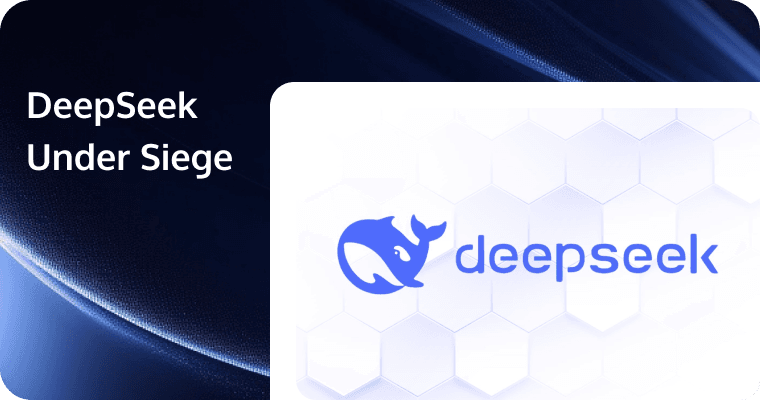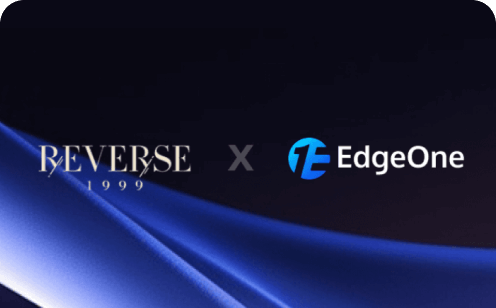DeepSeek Under Siege: The Rising AI Star Faces Unprecedented Cyber Attacks

In the rapidly evolving landscape of artificial intelligence, a new player has emerged from China, causing ripples across the global tech industry. DeepSeek, a startup founded by a team of brilliant researchers, has suddenly found itself at the center of international attention – both for its groundbreaking AI capabilities and the unprecedented cyber attacks it has faced. As DeepSeek's models demonstrate prowess that rivals, and in some cases surpasses, those of industry giants, the company has become both a beacon of pride for China's tech sector and a target for what appears to be coordinated cyber attacks from abroad.
What is DeepSeek?
DeepSeek is a cutting-edge artificial intelligence platform that has recently burst onto the global stage with its latest AI model. The company's Janus-Pro-7B model, in particular, has garnered widespread acclaim for outperforming some of the most advanced AI models in several benchmark tests. This achievement is all the more impressive considering DeepSeek's relatively modest resources – a team of just over 100 researchers using 2,048 NVIDIA H800 chips managed to create an AI system that competes with those developed by tech giants with vastly greater resources.
At its core, DeepSeek is a multi-modal AI tool that excels in natural language processing, emotional analysis, and adaptability to various application scenarios. The platform offers a range of services, including:
1. Intelligent Q&A: DeepSeek can engage in complex dialogues, providing detailed and contextually relevant answers to user queries.
2. Voice Assistant: The platform incorporates advanced speech recognition and synthesis capabilities.
3. Creative Content Generation: DeepSeek can assist in generating various forms of creative content, from writing to visual concepts.
4. Code Generation and Optimization: One of DeepSeek's standout features is its ability to assist in programming tasks, including code generation, bug diagnosis, and optimization.
5. Image Processing: As a multi-modal AI, DeepSeek can also handle image-related tasks, expanding its utility beyond text-based interactions.
The platform utilizes state-of-the-art machine learning and deep learning algorithms, enabling its dialogue system to learn and adapt continuously. This adaptability allows DeepSeek to meet the ever-growing demands of users across various domains.
In comparison to other AI tools like ChatGPT, DeepSeek has shown particular strengths in certain areas. For instance, it demonstrates superior capabilities in Chinese language processing and emotional understanding, making it especially appealing to the Chinese market and potentially other Asian markets.
The Rise and the Challenge
DeepSeek's rapid ascent has not gone unnoticed. The impact of its success was immediately felt in global markets, with tech giants like NVIDIA seeing significant market value fluctuations in response to DeepSeek's achievements. This market reaction underscores the perceived threat that DeepSeek poses to established players in the AI industry.
However, with great success comes great challenges. As DeepSeek's popularity soared, so did the attacks against it. The platform has recently faced severe system failures and what appears to be coordinated DDoS attacks, causing significant disruptions to its services.
The DDoS Siege on DeepSeek
In late January 2025, DeepSeek found itself under a massive and sophisticated cyber attack. The company's official status page announced that its online services were experiencing a large-scale malicious attack, forcing them to temporarily restrict registration methods to +86 phone numbers only.
The attacks, which began as early as January 3rd or 4th, escalated dramatically by January 27th and 28th. According to monitoring by Qi'anxin (QAX) XLab, a leading Chinese cybersecurity firm, the attacks evolved through several stages:
1. Initial Phase: HTTP proxy attacks were observed on January 3rd, 4th, 6th, 7th, and 13th.
2. Second Phase: From January 20th to 26th, the attacks shifted to SSDP and NTP reflection amplification methods.
3. Escalation Phase: Starting January 27th, there was a significant increase in attack volume, with a shift to application layer attacks, primarily HTTP proxy attacks.
The timing and sophistication of these attacks suggest a coordinated effort to disrupt DeepSeek's services. The peak of the attacks occurred between 3:00-4:00 AM Beijing time (UTC+8), corresponding to 2:00-3:00 PM Eastern Time (UTC-5) in North America. This timing indicates a potential cross-border characteristic to the attacks and possibly a targeted effort to affect the availability of DeepSeek's services overseas.
The Scale and Impact of the Attacks
The DDoS attacks against DeepSeek have been unprecedented in their scale and intensity. According to QAX, the attack traffic peaked at 2.3 Tbps, equivalent to the data impact of 300 large-scale online shopping events occurring simultaneously. This massive influx of traffic was designed to overwhelm DeepSeek's servers, making it impossible for legitimate users to access the service.
What made these attacks particularly insidious was the use of dynamic IP masking technology. Each puppet device in the botnet network only launched a brief attack before immediately switching identities, making it extremely difficult for traditional firewalls to effectively intercept the malicious traffic.
The attacks were not limited to DDoS efforts alone. Accompanying the flood of traffic, there were numerous attempts at password cracking, with the IP addresses for these attacks originating entirely from the United States. This multi-pronged approach demonstrated the comprehensive nature of the cyber campaign against DeepSeek.
The Impact on Users and the Market
The DDoS attacks and system failures had a significant impact on DeepSeek's user base and market position. Many users reported being unable to log in or interact with the platform, receiving error messages such as "The current operation cannot be completed. Please contact us if you need assistance." This disruption in service led to frustration among users and raised questions about the platform's stability and reliability.
Despite these challenges, DeepSeek's popularity remained strong. Even amidst the attacks, the DeepSeek app managed to top the free app charts on both the U.S. and Chinese App Stores. This resilience in user interest highlights the strong demand for DeepSeek's services and the unique value it offers in the AI market.
However, the incidents also sparked broader discussions about the stability and reliability of AI platforms. As users become increasingly reliant on these tools for various tasks, from content creation to coding assistance, the need for robust and resilient AI services becomes ever more critical.
The Need for Advanced DDoS Protection
The attacks on DeepSeek underscore the critical importance of advanced DDoS protection for AI platforms and other high-profile online services. As AI companies become more prominent and their services more integral to various industries, they also become more attractive targets for cyber attacks.
This is where solutions like Tencent EdgeOne come into play, offering sophisticated protection against the kind of attacks that DeepSeek faced.
Tencent EdgeOne's Advantages in DDoS Protection
Tencent EdgeOne is a comprehensive security and acceleration product that combines CDN capabilities with robust security features. When it comes to DDoS protection, Tencent EdgeOne offers several key advantages:
Outstanding bandwidth capabilities: EdgeOne has more than 3,200 edge nodes in over 70 countries and regions, with a total reserve of 200+ Tbps bandwidth resources. This enables EdgeOne to effectively absorb and disperse large-scale DDoS attacks.
Self-developed AI intelligent recognition algorithm: EdgeOne uses the most advanced self-developed AI intelligent recognition algorithm, which can detect and mitigate most DDoS attacks within an average of 3 seconds, with a 99.995% attack mitigation efficiency. This high efficiency ensures that e-commerce websites can quickly recover normal operation when facing complex attacks.
Anycast-based distributed defense architecture: EdgeOne adopts an Anycast-based distributed defense architecture, sinking security protection capabilities to edge nodes, achieving near-source cleaning, and dispersing attack traffic to nearby global nodes on the ISP side, providing over 15 Tbps of protection capabilities. This distributed approach greatly improves the protection effect and reduces the pressure of single-point protection.
Flexible pricing strategy: Traditional DDoS protection solutions usually result in additional bills due to a surge in traffic. However, EdgeOne adopts a clean traffic billing method, avoiding unexpected cost increases and helping businesses better manage their budgets.
One-stop platform: EdgeOne not only provides DDoS protection but also combines acceleration features, forming a one-stop platform solution to comprehensively address the network performance and security challenges of internet businesses. Compared to other single-point combination solutions, EdgeOne has a higher cost-performance ratio and lower management costs.
Rapid Response and Continuous Adaptation
Tencent EdgeOne's DDoS protection measures can respond almost instantaneously to threats, helping maintain server stability even during high-intensity attacks. Furthermore, by constantly updating defense strategies and adapting to new attack vectors, EdgeOne ensures evolving threats are met with equally advanced protective measures.

